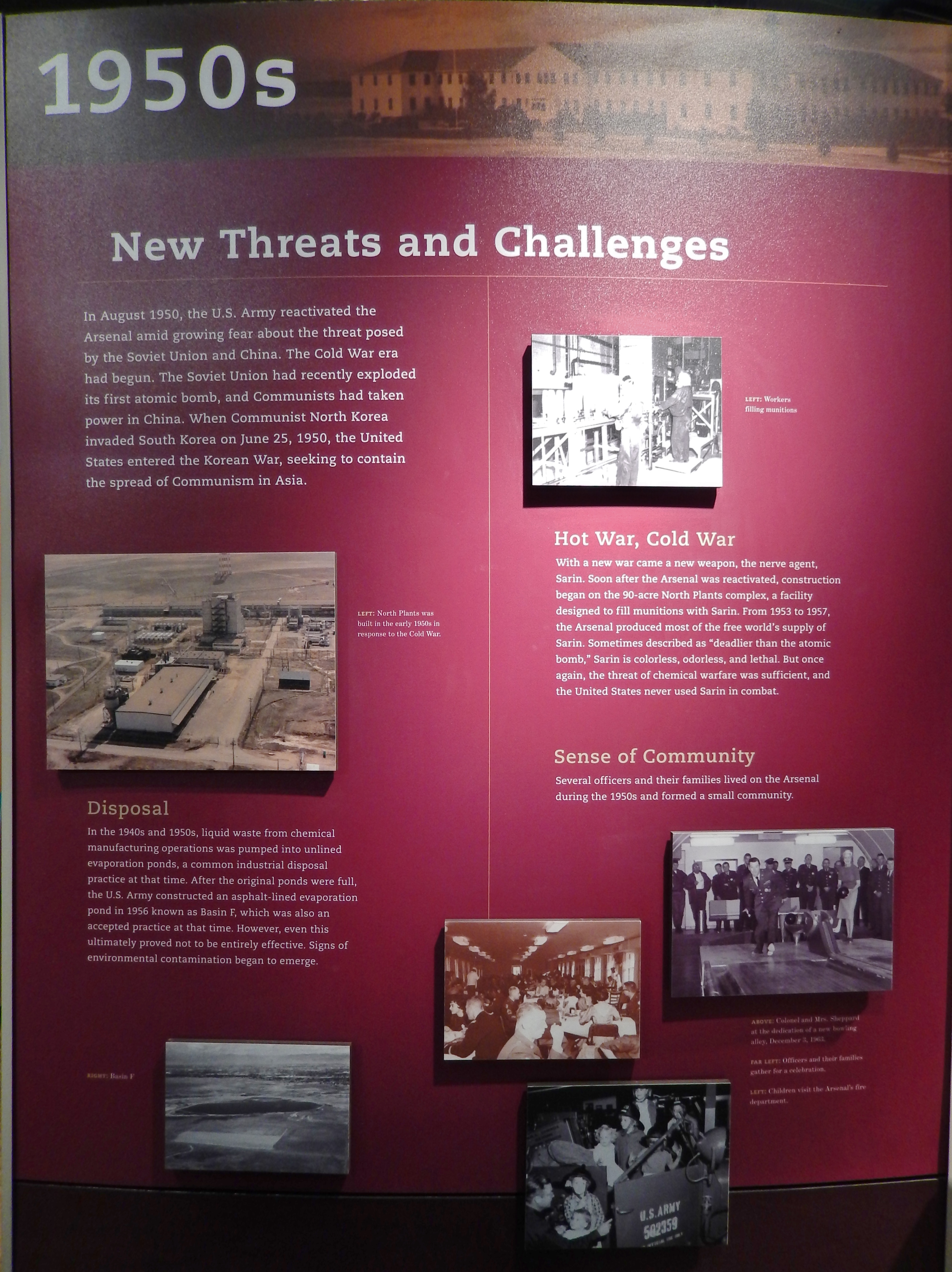Photograph as originally submitted to
this page in the Historical Marker Database
www.HMdb.org.
Click on photo to resize in browser. Scroll down to see metadata.
Photographer: Cosmos Mariner
Taken: June 27, 2018
Caption:
New Threats and Challenges (interpretive panel inside Rocky Mountain Arsenal Visitor Center) | Additional Description: In August 1950, the U.S. Army reactivated the Arsenal amid growing fear about the threat posed by the Soviet Union and China. The Cold War era had begun. The Soviet Union had recently exploded its first atomic bomb, and Communists had taken power in China. When Communist North Korea invaded South Korea on June 25, 1950, the United States entered the Korean War, seeking to contain the spread of Communism in Asia.
Disposal
In the 1940s and 1950s, liquid waste from chemical manufacturing operations was pumped into unlined evaporation ponds, a common industrial disposal practice at that time. After the original ponds were full, the U.S. Army constructed an asphalt-lined evaporation pond in 1956 known as Basin F, which was also an accepted practice at that time. However, even this ultimately proved not to be entirely effective. Signs of environmental contamination began to emerge.
Hot War, Cold War
With a new war came a new weapon, the nerve agent, Sarin. Soon after the Arsenal was reactivated, construction began on the 90-acre North Plants complex, a facility designed to fill munitions with Sarin. From 1953 to 1957, the Arsenal produced most of the free world's supply of Sarin. Sometimes described as "deadlier than the atomic bomb," Sarin is colorless, odorless, and lethal. But once again, the threat of chemical warfare was sufficient, and the United States never used Sarin in combat.
Sense of Community
Several officers and their families lived on the Arsenal during the 1950s and formed a small community.
Submitted: August 8, 2018, by Cosmos Mariner of Cape Canaveral, Florida.
Database Locator Identification Number: p439013
File Size: 4.389 Megabytes
To see the metadata that may be embedded in this photo, sign in and then return to this page.
